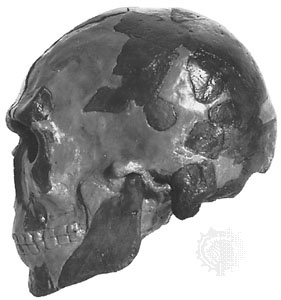Omo
anthropological and archaeological site, Ethiopia
 site of paleoanthropological excavations along the southern part of the Omo River in southwestern Ethiopia. Hominin (of human lineage) fossils unearthed there between 1967 and 1974 consist of about 200 teeth, four jaws, a partial skeleton, parts of two skulls, and a leg bone. The various layers have yielded remains from a broad and critical span of time in human evolution. Moreover, the geologic contexts and ages of the Omo material are known with precision, and the associated animal fossils provide a record of environmental change in eastern Africa.
site of paleoanthropological excavations along the southern part of the Omo River in southwestern Ethiopia. Hominin (of human lineage) fossils unearthed there between 1967 and 1974 consist of about 200 teeth, four jaws, a partial skeleton, parts of two skulls, and a leg bone. The various layers have yielded remains from a broad and critical span of time in human evolution. Moreover, the geologic contexts and ages of the Omo material are known with precision, and the associated animal fossils provide a record of environmental change in eastern Africa.The earliest hominin remains, dating to about 3 million years ago (mya), resemble those from Hadar and Laetoli and are attributed to Australopithecus afarensis. Specimens of Paranthropus aethiopicus occur from 2.7 to 2.3 mya. By 2.2 mya some teeth with characteristics distinctive of P. boisei (Australopithecus) appear. Fossils of this species continue to be found in younger strata to 1.3 mya. An early species of Homo is represented by a few remains dating between 2.6 and 1.3 mya, with H. ergaster or H. erectus (Homo erectus) appearing at 1.4 mya. Much later in time (perhaps 130,000 years ago), near-modern Homo sapiens is present. Oldowan (Oldowan industry) stone tools first appear between 2.4 and 2.3 mya.
The Omo River region is rich in fossils because the area was once highly volcanic. The layers of ash—easily dated by the potassium-argon (potassium-argon dating) method—reveal that the area, now an arid wasteland, was once a fertile region with several rivers and lush forests.
- riddle
- Riddle, Nelson
- Rideau Canal
- Rider University
- Ride, Sally
- Ridge and Valley
- Ridgely Torrence
- Ridge, Tom
- Ridgewood
- Ridgway, Matthew Bunker
- Ridgway ware
- Riding, Laura
- Ridler, Anne
- Ridley, Henry Nicholas
- Ridley, Nicholas
- Ridley Scott
- Ridolfi, Roberto
- riebeckite
- Riebeeck, Jan van
- Riecke's principle
- Ried
- Riedel thyroiditis
- Riefenstahl, Leni
- Rieger, František Ladislav
- Riegger, Wallingford